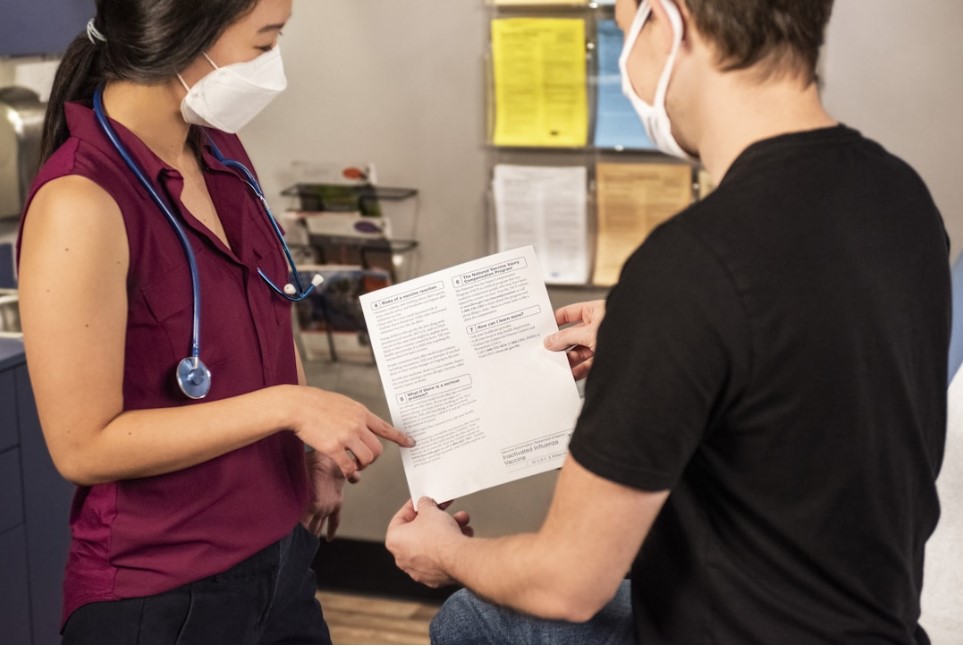Face pulls are one of those exercises that have gained popularity recently. It targets the posterior deltoids of the shoulder which are often ignored by other shoulder exercises. Face pulls are good exercise as they help to improve your posture, build rear delts, and achieve 3D-looking shoulders.
Face pulls work the following muscles:
- Posterior deltoid (rear delts)
- Mid Traps
- Lower Traps
- Infraspinatus
- Teres Major
However, they have some limitations and might not be the most efficient way to train your rear delts and improve your shoulder. In this article you will explore some of the best face pull alternatives that can be used to replace and supplement them.

REVERSE DUMBBELL FLYES:
Reverse dumbbell flyes are one of the best alternatives available to Face Pulls because of their accessibility. You don’t need any machine to perform this moment, it can be simply performed with dumbbells and will give you results as good as any other rear delts exercise.
This exercise facilitates flexibility regarding their range of motion and wrist and upper arm position.
HOW TO PERFORM:
- To perform this exercise, hinge at the hip so your upper body is just above parallel to the ground.
- Hold the dumbbells with a neutral or overhand grip, depending on your comfort and choice.
- Let your arms hang down with slightly bent elbows.
- Maintaining this elbow position, pull your shoulder blades together separating the dumbbells until they are about 90 degrees from your shoulder. Slowly lower the weight back to the starting position.
REVERSE PEC DECK
The reverse pec deck is one of the best exercises for developing, strengthening, and activating the musculature of your rear shoulder and upper back. It’s easy to use and customizable, and you can find the machine in most gyms.
HOW TO PERFORM:
- Set the seat so you’re facing the machine with the handles at chest height.
- With a tall chest and overhand grip pull the handles apart with a slight bend in your elbows.
- Once your upper arm is about in line with your shoulder return to the starting position.
INCLINE BARBELL ROW
The incline dumbbell rear deltoid row is an excellent exercise for targeting the posterior deltoid muscle. This exercise helps to strengthen the back of the shoulder, improving posture, shoulder stability, and range of motion. This exercise can also help to reduce shoulder pain and tension, as well as improve shoulder strength and endurance.
HOW TO PERFORM:
- Position yourself prone on an inclined bench, with your legs extended behind you and arms extended just below shoulder level.
- Using an overhand grip greater than shoulder-width apart, pick up the barbell, rowing it towards your chest by driving your elbows out and backward, squeezing your shoulder blades together to do so. Continue to drive your elbows back and pull your shoulder blades together until your elbows are by your side.
- Lower the barbell down, returning it to the starting position.

BAND PULL APART
Band pull-apart is an isolation exercise designed to target muscle groups in your shoulders and upper back. Perform band pull-apart by holding a resistance band with a shoulder-width grip. Keep your arms straight as you pull the resistance band laterally, extending both arms to either side.
This exercise requires only one portable piece of equipment, a resistance band which makes them perfect for your home workout routine.
HOW TO PERFORM:
- Hold the band in both hands with your arms raised in front at shoulder height and with slight tension on the band. With your elbows slightly bent, pull your shoulder blades together keeping your chest up.
- Once you’ve fully contracted your upper back, slowly bring your hands back to the starting position.

REVERSE CABLE FLYES
Another good alternative to face pulls. The reverse cable flyes are known for isolating the rear delts, offering a focused mind-muscle connection and intense contraction.
By working against the constant tension of the cable, this exercise not only enhances shoulder definition but also helps correct imbalances between the front and rear deltoids. The reverse cable fly isolates your deltoids during each rep, thus strengthening your shoulder muscles.
HOW TO PERFORM:
- Set the cable up in line with your upper chest with standard handles attached.
- Grab each handle with the opposite hand and stand tall with the shoulder stretched out.
- Keep your elbows slightly bent and at around shoulder height.
- Retract the scapula, squeeze them together and pull the cables apart. After reaching full contraction, slowly lower and bring the weights back to the start.
CHEST SUPPORTED REVERSE FLYES
The chest-supported reverse flyes are a great alternative to face pull. This exercise can be performed with either dumbbells or a cable machine. Chest-supported flies help you train your rear delts and upper back more efficiently.
If you have issues feeling your rear delts then this will be the most effective exercise that will blow your rear delts and upper back.
HOW TO PERFORM:
- Lie chest down on an incline bench with a dumbbell in each hand, palms facing in.
- Place your arms extended straight out and slightly downward, palms facing each other, and elbows slightly bent. Place your feet slightly wider than shoulder-width apart and ground your toes for your starting position.
- Raise the dumbbells out to the sides, squeezing your shoulder blades, until your arms are parallel to the floor and the dumbbells are shoulder high.
- Slowly lower the dumbbells back to the starting position.

WIDE GRIP INVERTED ROW
Wide grip inverted rows are excellent exercises to try as an alternative to face pulls. This specific exercise really targets your rear deltoids along with the rest of your upper back muscles as well.
This is a fantastic exercise for your upper back muscles along with rear deltoids. If you include this exercise in your routine, you’ll get the best result.
HOW TO PERFORM:
- Position yourself underneath the bar grabbing it with a shoulder-width overhand grip and placing your feet in front of you with your legs straight.
- Row yourself towards the bar, squeezing your shoulder blades together and continue until just before your upper chest contacts the bar.
- Lower yourself down, returning to the starting position.

CONCLUSION
In conclusion, while face pull is popular and one of the best exercises to train your rear deltoids and upper back it has some flaws also as maintaining posture throughout the movement makes it difficult for some people. But the good news is that the exercises discussed in this article will help you achieve similar results or even better face pull with or without the need to a cable machine. These bodyweight and free-weight alternatives can also build an impressive upper back definition.









